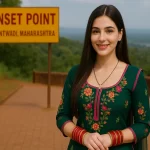Gadchiroli, Maharashtra – The Green Lung of India
“Ready to explore Gadchiroli’s untouched beauty? Share this guide or plan your trip today!”
🔴 Introduction
Nestled in eastern Maharashtra, Gadchiroli is a district where 70% of the land is cloaked in dense forests, earning it the title “Maharashtra’s Lung”. Home to ancient tribes, rivers like the Wainganga, and a history spanning dynasties from the Mauryas to the Gonds, Gadchiroli is a mosaic of cultural resilience and ecological wealth. Yet, it remains one of India’s least explored regions, often overshadowed by its challenges—Naxalite conflicts and industrial debates. This guide unravels Gadchiroli’s layers, from its prehistoric fossils to its modern-day struggles, offering travellers a roadmap to its hidden treasures.

🟢 Detailed Introduction to Gadchiroli, Maharashtra, India
Gadchiroli, nestled in eastern Maharashtra, is a district of contrasts—where dense forests meet a rich tapestry of history and culture. Known as the “Lung of Maharashtra” for its 70% forest cover, this region spans 14,412 km² and serves as a sanctuary for biodiversity, tribal traditions, and ancient architectural marvels.
Historically, Gadchiroli has been a crossroads of empires. From the Mauryas and Guptas to the Chalukyas and Yadavas, its lands witnessed dynastic shifts before becoming a stronghold of the Gond kings in the 13th century. The British later carved it into a tehsil in 1905, and it emerged as an independent district in 1982 after splitting from Chandrapur. Today, Gadchiroli’s identity is shaped by its tribal communities, lush landscapes, and ongoing struggles with Naxalism, which has designated it part of India’s “Red Corridor”.
Also Read
Mughalsarai – History, Culture, and Travel
Geographically, the district is defined by the Godavari River basin, which nourishes its teak and bamboo forests. The Wainganga and Indravati rivers further enrich its terrain, creating fertile plains and rugged hills. Monsoon transforms Gadchiroli into a verdant paradise, though flooding remains a challenge. Summers are scorching (up to 46°C), while winters offer mild temperatures (5–25°C), making October–March ideal for exploration.
Demographically, Gadchiroli is a mosaic of cultures. The 2011 census recorded a population of 1.07 million, with 38.7% belonging to Scheduled Tribes like the Gond and Madia. Marathi dominates (56%), but Gondi, Telugu, and Bengali are widely spoken, reflecting the district’s multicultural fabric . Economically, it relies on Agriculture (Paddy, Tendu leaves) and limited industries like Paper Mills and Mining, though challenges like underdevelopment persist.

🟣 Section Breakdown:
➸ History & Architecture: Dynasties, Forts and Tribal legacy.
➸ Geography & Climate: Monsoons, Forests and Travel seasons.
➸ Cultural Tapestry: Festivals, Languages and Handicrafts.
➸ Travel Guide: Attractions, Itineraries and Safety tips.
➸ Economy & Challenges: Mining, Agriculture and Development.
➸ FAQs: Your Questions Answered.
Gadchiroli, Maharashtra: Where Nature Meets Legacy
“In the heart of India’s tribal belt lies Gadchiroli — A land of Forests, Folklore and Fearless History”.
🟠 Detailed Section Breakdown:
🔘 History & Architecture: Echoes of Empires
➤ Granular Timeline:
➸ Prehistoric Era: Fossil discoveries in Sironcha (220 million years old) and Stone Age tools.
➸ Medieval Dynasties: Rashtrakutas and Yadavas left temples like Markanda Mahadev, dubbed “Khajuraho of Vidarbha”.
➸ Gond Rule (13th–18th century): Khandkya Ballal Shah built Chandrapur; Vairagad Fort stands as a Gond architectural marvel.
➸ British Era (1853–1947): Forest exploitation sparked tribal rebellions like the 1857 uprising led by Gond leader Baburao Shedmake.
➸ Post-Independence: Carved out as a district in 1982, Gadchiroli remains a hotspot for tribal rights and environmental debates.
➤ Architectural Gems:
➸ Vairagad Fort: Gond-era fortress near Armori with Hemadpanth-style carvings.
➸ Bhandareshwar Temple: Shiva shrine at the confluence of Khobragadi and Vainlochna rivers, featuring intricate stonework.
➸ Adishakti Temple: 1986 excavation revealed a four-armed Devi idol, reflecting ancient sculptural mastery.

🔘 History & Architecture of Gadchiroli: A Journey Through Time & Craftsmanship (With Granular Details)
➤ Prehistoric Roots and Ancient Settlements
Gadchiroli’s history stretches back over 220 million years, with fossil discoveries in Sironcha revealing remnants of Triassic-era marine life and dinosaur remains. Stone Age tools unearthed here, estimated to be 2.5 million years old, suggest early hominid activity, while Megalithic stone circles in Chamorshi and Arsoda (3,000 years old) indicate Iron Age communities with ceremonial burial practices, including horse sacrifices. These findings position Gadchiroli as a rare region where prehistoric ecosystems and early human civilisations intersected.
➤ Medieval Dynasties: Rashtrakutas and Yadavas
Between the 8th and 12th centuries, Gadchiroli fell under the influence of the Rashtrakutas and later the Yadavas of Deogiri. The Markanda Mahadev Temple, constructed during this era, stands as a testament to their Architectural prowess. Often dubbed the “Khajuraho of Vidarbha”, this temple complex features Hemadpanthi-style Carvings depicting scenes from Hindu epics like the Ramayana and Mahabharata. The temple’s intricate stonework, including floral motifs and celestial deities, reflects a blend of Dravidian and Nagara architectural styles.
➤ Gond Rule: Indigenous Governance and Fortifications
In the 13th century, the Gond dynasty emerged as a dominant force, with Khandkya Ballal Shah founding Chandrapur (then Chanda) as their capital. The Gonds built strategic forts like Vairagad Fort near Armori, which served as both military outposts and administrative hubs. These forts utilized locally sourced stone and teak, featuring Moats, Watchtowers and Underground Tunnels to withstand invasions. The Gond rulers also commissioned Irrigation Systems and Temples, Integrating Hindu iconography with Tribal motifs, such as carvings of forest deities like Persa Pen.
➤ Maratha and British Colonial Eras
By the Mid-18th century, the Maratha Bhonsles annexed Gadchiroli, introducing land revenue systems that disrupted tribal economies. British colonisation (Post-1853) intensified exploitation, with forests logged for teak and bamboo, triggering tribal rebellions like the 1857 uprising led by Gond leader Baburao Shedmake. Colonial infrastructure, such as the Telangana Barrage on the Wainganga River, prioritised resource extraction over local welfare, leaving a legacy of underdevelopment.
➤ Post-Independence Formation and Tribal Welfare
Gadchiroli became an independent district in 1982 after splitting from Chandrapur. Post-independence initiatives focused on tribal welfare, including Aashramshalas (Residential Schools) and Healthcare Programs like SEARCH NGO by Dr. Abhay and Rani Bang, which reduced infant mortality by 70%. However, the district’s dense forests also made it a hotspot for Naxalite Insurgency, complicating development efforts.
➤ Architectural Marvels: Temples and Forts
➸ Markanda Temple Complex: Located on the Wainganga River’s banks, this 8th-century complex includes 24 shrines dedicated to Shiva. Its Star-shaped Plan and Sandstone Carvings of dancers and warriors reflect Rashtrakuta-Yadava syncretism. The annual Mahashivratri fair attracts over 500,000 pilgrims.
➸ Bhandareshwar Temple: A 12th-century Shiva temple at the confluence of the Khobragadi and Vainlochna rivers, notable for its Hemadpanthi Stone Latticework and Pyramidal Shikhara.
➸ Adishakti Temple: Discovered in 1986, this temple houses a rare Four-Armed Devi Idol with intricate carvings of lotus and serpent motifs, linked to the Chalukyan era.
➤ Tribal Architecture: Harmony with Nature
Gadchiroli’s tribal communities, such as the Madia Gonds, employ sustainable building techniques. Their Wattle-and-daub Huts use Bamboo Frames, Mud Plaster, and thatched roofs made from Kans Grass. Villages often feature Sacred Groves (Devrais) dedicated to forest deities, where rituals like the Rela dance are performed during harvests.
➤ Colonial and Modern Influences
British-era structures like the Gadchiroli Fort (17th-century) and Forest Rest Houses in Bhamragad showcase hybrid designs—stone foundations with European-style arches. Post-2000, projects like the Markanda Temple Redevelopment aim to blend heritage conservation with modern amenities, including Riverfront Promenades and interpretation centres.
➤ Conservation Challenges and Initiatives
Gadchiroli’s ancient sites face threats from weathering and neglect. The Archaeological Survey of India (ASI) has documented over 20 megalithic sites, but many remain obscured by forest growth. Recent efforts, such as the Forest Rights Act (2006), empower tribal villages to manage heritage sites alongside forest resources, though balancing mining (e.g., Surjagarh Iron Ore) with preservation remains contentious.
➤ Legacy and Cultural Synthesis
Gadchiroli’s architecture is a mosaic of Tribal Resilience, Hindu Spirituality and Colonial Pragmatism. From the Gond-era Surjagarh Fort to the British-era Paper Mills in Ashti, each structure narrates a chapter of adaptation and resistance. Today, the district’s Bamboo Crafts and Tussar Silk from Armori taluka continue ancient artisanal traditions, bridging past and present.
➨ Final thoughts on History & Architecture of Gadchiroli
Gadchiroli’s history and architecture are intertwined with its forests, rivers, and tribal ethos. Whether through the celestial carvings of Markanda or the guerrilla-resistant Gond forts, the district offers a profound narrative of cultural endurance. For travellers and historians alike, Gadchiroli is not just a destination but a living archive of India’s untold stories.

🔘 Gadchiroli’s Geography & Climate: Nature’s Playground
➤ Talukas & Landscape:
➸ 12 Talukas: Gadchiroli, Chamorshi, Aheri, Etapalli, and Sironcha are forest-heavy; Bhamragad and Dhanora are hilly.
➸ Rivers: Godavari, Indravati, and Pranhita (fusion of Wainganga and Wardha) sustain dense teak and bamboo forests.
➤ Climate:
☀️ Summer (March–June): Scorching, with highs of 46°C (recorded in 1992).
🌧️ Monsoon (June–September): Receives 1,704 mm annual rainfall; lush greenery but flood-prone.
☁️ Winter (November–February): Chilly, dipping to 5°C (1992 record).
➨ Travel Tip: Visit October–March for pleasant weather. Avoid monsoons for treks due to flooding.
🔘 Cultural Tapestry: Tribes, Tongues and Traditions
➤ Demographics:
⦿ Population: 1.07 million (2011), 38.7% tribal—mostly Gonds and Madia.
⦿ Languages: Marathi (56%), Gondi (14%), Telugu (9%), and Bengali (5%).
➤ Festivals & Crafts:
⦿ Rela & Dhol Dances: Tribal celebrations during harvests.
⦿ Handicrafts: Bamboo crafts and Tussar silk from Armori.
➨ Interview: “Our Rela dance is a prayer to Persa Pen, our god. It’s our way of thanking the forest”, says Lakshmi, a Gond artisan from Etapalli.
🔘 Travel Guide: Explore the Unexplored
➤ Top Attractions: Briefly Presented
➸ Chaprala Wildlife Sanctuary: Spot tigers and rare birds.
➸ Hemalkasa: Dr. Prakash Amte’s hospital and animal rescue centre.
➸ Allapalli Forest: “Teak City” with towering trees and tribal markets.
➤ Itinerary (3 Days): Option 1
⦿ Day 1: Gadchiroli Lake ➙ Semana-Hanuman Temple.
⦿ Day 2: Trek to Surjagarh Fort ➙ Evening at Markanda Temple.
⦿ Day 3: Visit Hemalkasa ➙ interact with Madia Gond communities.
➨ Local Eats: Try Bamboo Chicken and Chana Samber at Tribal haats.
🔘 Economy & Challenges: Growth vs. Nature
➤ Economy:
⦿ Agriculture: Paddy (70% farmland), Tendu Leaves, and Bamboo.
⦿ Mining: Surjagarh’s Iron ore reserves spark Debates—employment vs. Deforestation.
➤ Notable People and Their Work
➸ Dr. Abhay and Rani Bang: Pioneers in rural healthcare, their NGO SEARCH reduced infant mortality by 70% through community-led programs.
➸ B. Prabhakaran (Thriveni Earthmovers): Revived Surjagarh mining, creating 5,000+ jobs and funding schools/hospitals.
➸ Kartik Swami Maharaj: Founded the Chaprala Ashram, blending spirituality with wildlife conservation.

🔘 How to Reach Gadchiroli: A Comprehensive Travel Guide
Gadchiroli, nestled in eastern Maharashtra, is a district rich in forests and tribal culture but requires strategic planning to reach due to limited transportation infrastructure. Below is a detailed breakdown of travel options, distances from major cities, and practical tips for a seamless journey.
➤ By Air: Connecting to the Nearest Airport
The closest major airport is Dr. Babasaheb Ambedkar International Airport (NAG) in Nagpur, located 141 km away. Nagpur is well-connected to cities like Delhi, Mumbai, and Hyderabad via daily flights. From Nagpur, hire a taxi (₹2,500 – ₹4,000 for a 3.5 – hour drive) or take a state transport bus (₹200 – ₹300) to Gadchiroli.
➨ Alternative Airports:
⦿ Raipur Airport (RPR) in Chhattisgarh (322 km away) is an option for travellers from eastern India.
⦿ Hyderabad Airport (HYD) (450 km away) suits those from southern states.
➤ By Rail: Limited but Strategic Connections
Gadchiroli lacks direct rail connectivity, but the nearest station is Wadsa (Desaiganj), 18 km away, with a short 18.48 km Railway line connecting it to Chandrapur. Key rail routes:
➸ From Nagpur: Take a train to Chandrapur (2.5 hours, ₹50 – ₹200), then a taxi (1.5 hours, ₹1,500 – ₹2,000).
➸ From Mumbai: Board the Sewagram Express to Chandrapur (12 hours, ₹400 – ₹2,500), followed by a taxi.
➸ From Delhi: Opt for the Gondwana Express to Chandrapur (18 hours, ₹600 – ₹2,800).
➤ By Road: Highways and Scenic Routes
Gadchiroli is accessible via National Highway 353C and State Highway 1220, with well-maintained roads from Nagpur and Chandrapur.
➸ From Nagpur: 180 km, 4-hour drive via NH353C. Private taxis (₹3,000 – ₹4,000) and state buses (₹200 – ₹400) are available.
➸ From Mumbai: 898 km, 14-hour drive via NH753F. Break the journey at Pune or Aurangabad.
➸ From Hyderabad: 350 km, 7-hour drive via NH44 and NH353C.
➤ Distance from Major Cities
| City | Distance (km) | Travel Time (Road) | Best Mode |
| Chandrapur | 80 km | 2 hours | Taxi |
| Nagpur | 180 km | 4 hours | Taxi / Bus |
| Hyderabad | 350 km | 7 hours | Taxi |
| Pune | 779 km | 13 hours | Train via Nagpur |
| Mumbai | 898 km | 14 hours | Train + Taxi |
| Delhi | 1,148 km | 16.5 hours | Flight + Taxi |
➤ Local Transportation: Navigating the District
➸ Buses: Maharashtra State Transport (MSRTC) operates buses from Gadchiroli to nearby towns like Aheri and Chamorshi (₹50 – ₹150).
➸ Taxis: Pre-book through agencies like SS Carrentals (₹10/km) for remote areas like Hemalkasa or Bhamragad.
➸ Auto-Rickshaws: Ideal for short distances within Gadchiroli town (₹20 – ₹100).
➤ Safety and Travel Advisories
➸ Naxalite Zones: Avoid night travel in forested areas like Etapalli and Dhanora. Stick to daylight hours and main highways.
➸ Road Conditions: Monsoon (July–September) often causes flooding on NH353C; check alerts before travelling.
➤ Itinerary Suggestions
⦿ From Nagpur: Fly in ➙ Taxi to Gadchiroli (3.5 hours) ➙ Visit Chaprala Wildlife Sanctuary.
⦿ From Mumbai: Overnight train to Chandrapur ➙ Taxi to Gadchiroli ➙ Explore Markanda Temple.
⦿ From Delhi: Flight to Nagpur ➙ Taxi ➙ Stay at Forest Rest Houses in Bhamragad.
➤ Budget and Luxury Travel Options
⦿ Budget: State buses (₹200 – ₹500) and shared taxis (₹150 – ₹300 per seat).
⦿ Mid-Range: Private taxis (₹3,000 – ₹5,000/day) with drivers familiar with forest routes.
⦿ Luxury: Chartered helicopters from Nagpur (₹50,000 – ₹70,000/hour) for urgent travel.
➤ Connectivity Challenges
➸ No Direct Trains: The district’s sole railway line (18.48 km) connects Wadsa to Chandrapur, limiting options.
➸ Airport Limitations: Nagpur Airport lacks international flights; connect via Delhi or Mumbai for overseas travellers.
➤ Key Tips for Travellers
➸ Book in Advance: Secure accommodations like the PWD Guest House (₹800/night) or Forest Rest Houses (₹2,000/night) early.
➸ Carry Cash: ATMs are sparse in rural areas.
➸ Local Guides: Hire through agencies like Chanakya Academy for treks to Surjagarh Fort or tribal village tours.
➨ Brief Sub-sectional Comment
Gadchiroli’s remoteness adds to its allure but demands meticulous planning. Prioritise road travel from Nagpur or Chandrapur, and leverage local expertise for safe exploration. Whether you’re a wildlife enthusiast or cultural traveler, this guide ensures you navigate Gadchiroli’s challenges while soaking in its untouched beauty. For real-time updates, visit Gadchiroli’s official portal.
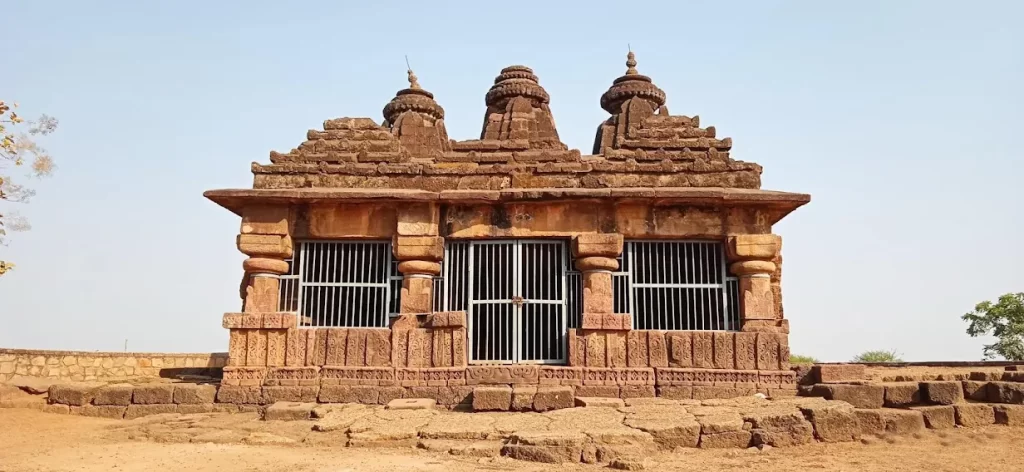
🔘 Best Places for Refreshments in Gadchiroli: A Granular Guide
Gadchiroli’s culinary landscape is a vibrant blend of tribal traditions, Maharashtrian flavours, and multicultural influences. From bustling tribal markets to serene riverside eateries, here’s an in-depth exploration of the district’s top refreshment spots, complete with cultural context and practical details.
➤ Pushkar Kumbh Mela at Sironcha
Held once every 12 years on the banks of the Pranhita River, the Pushkar Kumbh Mela is a spiritual and culinary spectacle. Pilgrims and travellers are treated to Community Kitchens (Langars) serving traditional Maharashtrian dishes like Puran Poli (Sweet Lentil-stuffed Bread) and Varan Bhaat (Dal-Rice), prepared by local volunteers. Temporary food stalls offer snacks such as Bhajiyas (Fried vegetable fritters) and Sabudana Khichdi (Tapioca Pearls cooked with Peanuts and Spices). The Mela’s Kaleshwaram Temple area also hosts vendors selling Prasad like Coconut Laddu and Sesame Sweets.
⦿ Best Time: During the Kumbh Mela (next in 2032).
⦿ Unique Feature: Participate in Aarti rituals followed by communal meals.
➤ Tribal Haats in Allapalli
The weekly Tribal Markets (Haats) in Allapalli, known as the “Teak City”, are culinary hubs. Here, Gond and Madia tribes sell Bamboo Chicken, a signature dish marinated in local spices like Ramdas (Wild Turmeric) and Roasted inside Bamboo stalks over open flames. Pair it with Chana Sambar (Spicy Lentil Stew) and Bhakri (Millet Flatbread). Don’t miss Tendu Leaf Pakoras, crispy fritters made from forest-gathered leaves, served with Mint Chutney.
⦿ Timing: Markets operate every Thursday and Sunday.
⦿ Must-Try: Mahua Liquor, a Traditional Tribal Brew made from Mahua Flowers.
➤ Hemalkasa’s Lok Biradari Prakalp Community Kitchen
Founded by Dr. Prakash Amte, this centre in Hemalkasa offers a rare taste of Madia Gond cuisine. The community kitchen serves Pej, a nutrient-rich porridge made from Ragi or Jowar and Chapura, a pungent chutney of fermented fish and red ants. Visitors can join workshops to learn tribal cooking techniques, such as smoking meat over sal wood.
⦿ Best Time: October–March, when tribal festivals like Rela are celebrated.
⦿ Cultural Insight: Meals are often shared in communal Gotuls (Tribal Gathering Spaces).
➤ Bengali Food at Durga Puja Pandals in Mulchera
Gadchiroli’s Bengali refugee communities in Mulchera transform the town during Durga Puja into a food lover’s paradise. Street stalls near pandals serve Macher Jhol (Fish Curry), Luchi (Deep-fried Bread) and Rosogolla (Syrup-soaked Cottage Cheese Balls). The Kali Puja in October features Bhog offerings like Khichuri (Spiced Rice-lentil dish) and Payesh (Rice Pudding).
⦿ Timing: October (Durga Puja) and November (Kali Puja).
⦿ Highlight: Nightlong Kirtan sessions with free Mishti Doi (Sweet Yogurt).
➤ Forest Rest Houses (Bhamragad, Chaprala)
The Maharashtra Forest Department’s Rest Houses in Bhamragad and Chaprala offer rustic meals prepared by local staff. Ingredients are sourced from nearby villages, including Wild Mushrooms, Bamboo Shoots and River Fish. Try Pithla Bhakri (Gram Flour Curry with Millet Bread) and Amba Dal (Mango-lentil soup). Advance bookings are required, and meals are served in traditional Pattal (Leaf Plates).
⦿ Cost: Meals priced at ₹150 – ₹300 per person.
⦿ Specialty: Tendu Leaf Chutney, a Tangy accompaniment made with Tamarind and Jaggery.
➤ Gadchiroli Town’s Street Food Scene
The town’s Gandhi Chowk area buzzes with street vendors after sunset. Popular picks include:
⦿ Poha-Jalebi: Flattened Rice with Onions and Sev, paired with Syrupy Jalebis.
⦿ Saoji Chicken: A fiery Nagpur-style curry made with 25+ Spices, served with Tandoori Roti.
⦿ Tarri Poha: A spicy variant topped with Chickpea curry.
⦿ Timing: 6 PM – 10 PM daily.
➤ Riverside Eateries at Somnur Sangam
The confluence of the Godavari and Indravati rivers hosts makeshift Riverside Dhabas during winter. Freshwater fish like Rohu and Katla are grilled with Gavran Masala (Rural Spice Blend). Vegetarian options include Bhutta Roti (Cornflat Bread) and Zunka (Spiced Gram Flour Curry). Boating operators often pack picnic baskets with local delicacies for day trips.
⦿ Best Time: November–February.
⦿ Unique Experience: Moonlit dinners by the riverbanks.
➤ Surjagarh Fort Trek Refreshment Stalls
Local Gond families set up Trekking pit stops near Surjagarh Fort, offering Sattu Sherbet (Roasted Gram Flour Drink) and Chana Chor Garam (Spiced Roasted Chickpeas). Post-trek, indulge in Gur-daliya (jaggery-sweetened cracked wheat) for energy replenishment.
⦿ Cost: Snacks priced at ₹20 – ₹50.
⦿ Tip: Carry reusable water bottles; natural springs along the trail provide safe drinking water.
➤ Dhabas on National Highway 353C
The highway connecting Gadchiroli to Nagpur features Roadside Dhabas like Shree Krishna Punjabi Dhaba, known for Dal Makhani and Paneer Tikka. Truckers swear by their Kadak Chai (Strong Tea) and Aloo Paratha. These spots are ideal for pit stops during long drives.
⦿ 24/7 Service: Select Dhabas operate round-the-clock.
➤ Tribal Brews and Forest Honey
In Etapalli’s weekly markets, tribal vendors sell Mahua Liquor (Fermented Floral Brew) and Forest Honey infused with medicinal herbs. The honey, collected from hives in the Dandakaranya forests, is prized for its anti-inflammatory properties. Pair it with Ragi Cookies sold at stalls.
⦿ Caution: Check local regulations before purchasing tribal alcohol.
➨ Final Tips for Food Explorers
➸ Hygiene: Stick to freshly cooked items; avoid raw salads in remote areas.
➸ Seasonal Specials: Monsoon brings Bhutte Ka Kees (Grated Corn Curry), while summer features Aamras (Mango Pulp).
➸ Cultural Etiquette: Always ask permission before photographing tribal meals or rituals.
From fiery Saoji curries to tranquil riverside feasts, Gadchiroli’s refreshment spots offer a sensory journey through its forests, rivers, and cultures. Each bite tells a story of resilience and tradition.
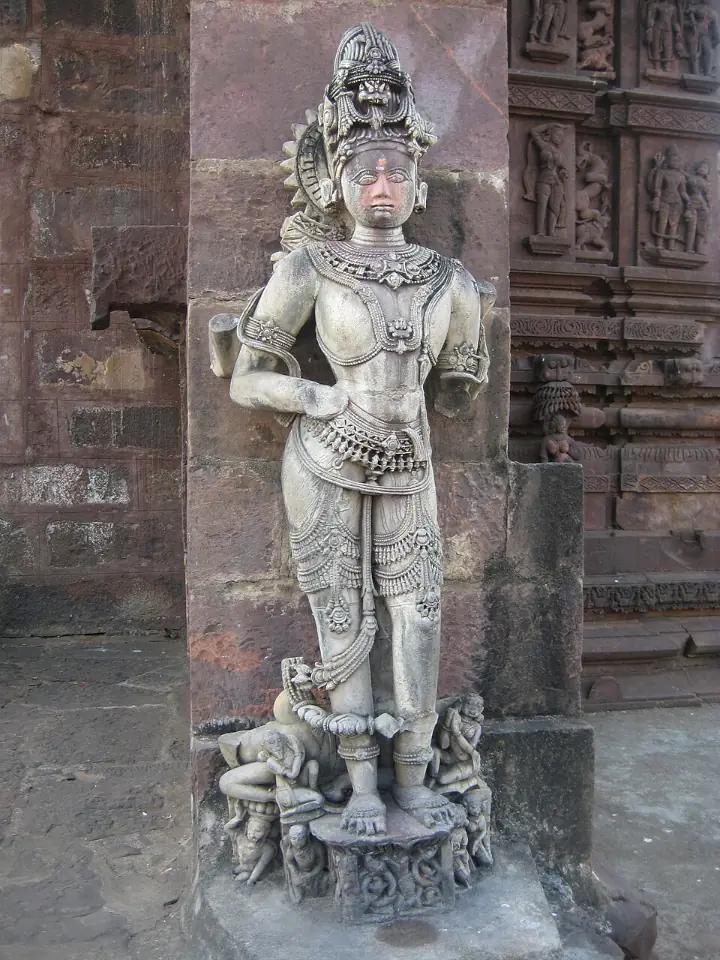
🔘 Best Places to Visit in Gadchiroli: A Granular Guide
➤ Chaprala Wildlife Sanctuary
Nestled in the Mulchera taluka, Chaprala Wildlife Sanctuary spans 140 km² and is renowned for its riparian ecosystem along the Pranhita River, formed by the confluence of the Wardha and Wainganga rivers. The sanctuary is a biodiversity hotspot, hosting tigers, leopards, sloth bears, and over 150 bird species. Its dense teak forests and monsoon-fed streams create a lush habitat, while the Markhanda and Pedigundam hills add dramatic vistas. Wildlife enthusiasts can explore safari trails or visit during February–May when animals gather near water sources. Conservation efforts here are linked to the Tadoba-Andhari Tiger Reserve, ensuring habitat protection.
➤ Wadadam Fossil Park
Located in Sironcha taluka, Wadadam Fossil Park is a paleontological marvel showcasing 220-million-year-old fossils from the Triassic period, including marine creatures and dinosaur remains. Discovered in 1959 near the Godavari basin, the park features sedimentary rock formations and guided tours explaining prehistoric ecosystems. Highlights include fossilised plant imprints and a replica of a dinosaur skeleton. Visit between October and March for comfortable exploration, and pair your trip with the nearby Kaleshwaram Temple for a blend of science and spirituality.
➤ Markandadeo Temple
Dubbed the “Khajuraho of Vidarbha”, the Markandadeo Temple near Chamorshi is a 12th-century Hemadpanthi-style marvel dedicated to Lord Shiva. Its intricate carvings depict scenes from Hindu epics, and the annual Mahashivratri fair attracts 50,000+ pilgrims. The temple sits on the banks of the Wainganga River, offering serene views. Reach via Gadchiroli (40 km) or Nagpur (184 km), and combine your visit with a stop at the British-era rest house in Sironcha for historical context.

➤ Surjagarh Fort
Perched on iron-rich hills in Etapalli taluka, Surjagarh Fort is a Gond-era stronghold offering a challenging 3-hour trek. The ruins provide panoramic views of dense forests and the Surjagad mining region. Local guides share tales of Gond resistance against British rule. Nearby, the Chandrakhandi waterfall and Madia Gond villages add cultural depth. Avoid monsoon treks due to slippery trails, and stay at the PWD guesthouse in Bhamragad for convenience.
➤ Hemalkasa and Lok Biradari Prakalp
Founded by Dr. Prakash Baba Amte, Lok Biradari Prakalp in Hemalkasa combines wildlife rescue, healthcare, and tribal education. The centre houses rescued animals like leopards and langurs, while the adjacent hospital serves remote Madia Gond communities. Participate in community-led workshops on sustainable farming or attend the annual tribal fair. Located 186 km from Gadchiroli, the journey itself traverses scenic forests and rivers.
➤ Bhamragad Sangam
At Bhamragad Sangam, the Pamulgautam, Indravati, and Parlkota rivers merge, creating a breathtaking landscape. The PWD guesthouse here offers prime sunset views over the tri-river confluence. The area is a gateway to Madia Gond culture—visit nearby villages to witness Rela dances and bamboo crafts. Monsoon transforms the rivers into roaring torrents, while winter offers tranquil boating opportunities. Don’t miss the Indras Falls in Binagunda, a 40 km trek from Bhamragad.
➤ Lakka Metta (Lakshagruh)
Steeped in Mahabharata lore, Lakka Metta near Aheri is believed to be the site where the Pandavas escaped the Lakshagruh fire. The trek through dense forests leads to ancient brick ruins, a hidden lake, and a subterranean tunnel. Local tribes recount oral histories of the site, adding mythological depth. Visit between October–June, and stay at the Rest House in Alapalli for early-morning treks.
➤ Allapalli Forests (Van Vaibhav)
Known as the “Teak City”, Allapalli Forests feature towering teak trees, some over 39 meters tall, preserved since 1953. The Medpalli Lake within this 6-hectare plot attracts researchers studying its unique algae and spider ecosystems. Tribal markets here sell bamboo crafts and tendu leaf products. Visit October–February for cool weather, and explore the nearby Glory of Allapalli, a biodiversity hotspot.
➤ Somnur Sangam
Where the Godavari and Indravati rivers meet, Somnur Sangam in Sironcha taluka is both a spiritual and natural wonder. Pilgrims bathe in the sacred waters during festivals, while adventurers kayak through monsoon rapids. The surrounding hills and “Roaring Waters” section provide photogenic backdrops. Pair your visit with the Wadadam Fossil Park for a day of nature and history.
➤ Pushkar Kumbh Mela at Sironcha
Held every 12 years on the Pranhita River, the Pushkar Kumbh Mela draws lakhs of devotees from Maharashtra, Telangana, and Chhattisgarh. Rituals include holy dips, Kaleshwaram Temple worship, and spiritual discourses. The district administration sets up temporary ghats, medical camps, and community kitchens. The next Mela in 2032 promises a vibrant mix of devotion and cultural performances.
➨ Final Tip: Gadchiroli’s hidden gems are best explored with local guides who can navigate its dense forests and share tribal stories. Prioritise visits to Chaprala and Surjagarh for wildlife and history, and time your trip around festivals like Mahashivratri for a cultural deep dive.
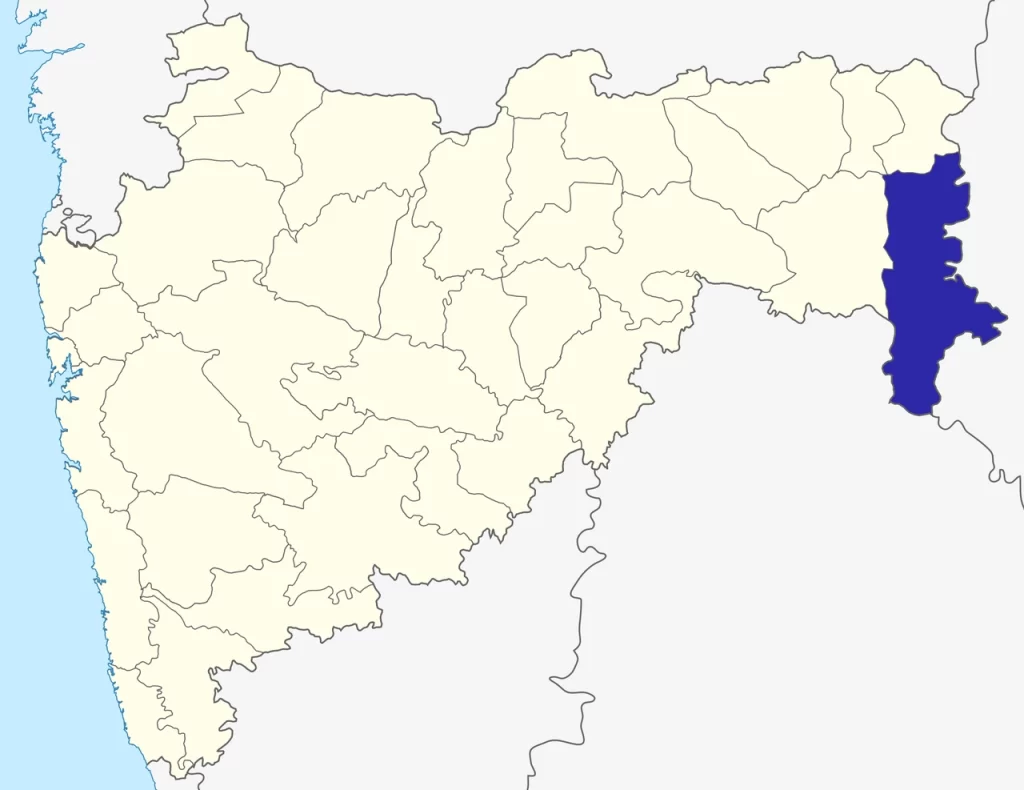
🔘 Where to Stay
➤ Luxury Hotels
➸ No large luxury chains operate here due to remoteness. Opt for Forest Rest Houses (Bhamragad, Chaprala):
⦿ Rates: ₹2,000 – ₹3,500/night.
⦿ Facilities: Basic AC rooms, Guided Tours, and Tribal Cuisine on request.
➤ Budget Hotels & Guesthouses
🏛️ PWD Guest House (Gadchiroli Town):
⦿ Rates: ₹800 – ₹1,200/night.
⦿ Check-in: 12 PM. Offers free Wi-Fi and vegetarian meals.
🏛️ Chanakya Academy Guest House (Aheri):
⦿ Rates: ₹500/night. Ideal for students and researchers.
➤ Dharamshalas
🛕 Markandadeo Temple Dharamshala:
⦿ Donation-based stay: ₹100 – ₹300. Simple rooms with shared bathrooms.
Note: Hotel rates are subject to change and may vary based on factors like seasonality, availability, and promotions. Taxes, service charges, and other applicable fees are not always included in displayed rates.

🔘 Demographics of the Region
⦿ Population: 1.07 million (2011), with 38.7% Tribal Communities.
⦿ Languages: Marathi (56%), Gondi (14%), Telugu (9%).
⦿ Religion: Hindus (86.4%), Buddhists (7.7%), Tribal faiths (2.8%).
🔘 Climatic Conditions
☀️ Summer (March–June):
⦿ Temperature: 30°C – 46°C.
⦿ Activities: Avoid daytime outdoor trips; visit early morning markets.
🌧️ Monsoon (July–September):
⦿ Rainfall: 1,704 mm annually. Lush greenery but flood-prone roads.
☁️ Winter (October–February):
⦿ Temperature: 5°C – 25°C. Ideal for trekking and festivals.
🔘 Talukas in Gadchiroli District
⦿ Gadchiroli
⦿ Chamorshi
⦿ Aheri
⦿ Etapalli
⦿ Sironcha
⦿ Kurkheda
⦿ Dhanora
⦿ Mulchera
⦿ Bhamragad
⦿ Armori
⦿ Korchi
⦿ Desaiganj (Wadsa)
🔘 Industrial Development and Major Industries
⦿ Mining: Surjagarh’s iron ore reserves (25 MTPA capacity) drive steel production.
⦿ Agriculture: Tendu leaves (₹500 – ₹800/kg) and bamboo crafts fuel the rural economy.
⦿ Paper Mills: BILT Unit in Ashti produces 200+ tons/month of paper pulp.

🔘 Sectional Breakdown with Interviews & Itineraries
➤ Local Interview
➨ Lakshmi Gond, Artisan (Etapalli):
“Our Rela dance honours Persa Pen, the forest god. We use bamboo from these woods to craft baskets sold in Chandrapur markets”.
➤ 3-Day Itinerary (Option 2)
⦿ Day 1: Gadchiroli Lake ➙ Semana-Hanuman Temple.
⦿ Day 2: Surjagarh Fort trek ➙ Evening at Markanda Temple.
⦿ Day 3: Hemalkasa’s wildlife rescue centre ➙ Tribal dinner.
🔘 Historical Timeline
⦿ 220 Million BCE: Marine fossils deposited in Sironcha.
⦿ 13th Century: Gond king Khandkya Ballal Shah establishes Chandrapur.
⦿ 2021: Surjagarh mining resumes, sparking economic revival.
➤ FAQs
Is Gadchiroli safe for tourists?
Stick to daytime travel in non-Naxal areas like Gadchiroli town and Chamorshi.
How to reach Gadchiroli?
Nearest airport: Nagpur (180 km). Trains to Desaiganj (18 km from Gadchiroli).
➤ Conclusion
Gadchiroli is a paradox—a place where ancient forests whisper tales of dynasties, and tribal traditions clash with modern ambitions. Whether you’re a history buff, nature lover, or cultural enthusiast, this district offers a raw, unfiltered slice of India.
➤ Sources:
➸ Gadchiroli District Official Website
➸ Wikipedia – Gadchiroli
➸ SEARCH NGO
➸ Mining Conflicts Report
➸ Maharashtra Tourism
Image Credit
➸ Wikimedia Commons – Gadchiroli in Maharashtra (India).svg
➸ Wikimedia Commons – Markanda temples11-Gadchiroli-Maharashtra
➸ Wikimedia Commons – Markanda temples12-Gadchiroli-Maharashtra
➸ Wikimedia Commons – Markanda temples7-Gadchiroli-Maharashtra
➸ Wikimedia Commons – Maharashtra Gadchiroli
➸ Wikimedia Commons – Kathani River Pool – Gadchiroli – Maharashtra -DSC 0004
➸ Wikimedia Commons – Group of Temple at Markanda- Markanda
➸ Wikimedia Commons – 0101923 Shiva temple group, Thanegaon Gadchiroli Maharashtra 014
➸ Wikimedia Commons – Kathani River Pool – Gadchiroli – Maharashtra -DSC 0001
➸ Wikimedia Commons – Markanda Temples
➸ Wikimedia Commons – Ancient Shiv temple in Armori dist. Gadchiroli
For more information, you can visit our website: ExploreXP
“Come to Gadchiroli not just for its beauty, but to understand the soul of India’s tribal heartland”. 🌿
Latest Posts
- Explore Gadchiroli, Maharashtra: History, Architecture, Culture, Itineraries and Nature

- Exploring Mughalsarai: History, Culture, and Travel
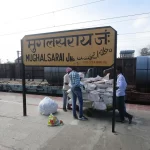
- Explore Katni, Madhya Pradesh: History, Culture, and Nature

- Ludhiana, Punjab, India – The Industrial Heartbeat with Timeless Heritage

- Unveiling Osmanabad (Dharashiv): Maharashtra’s Hidden Gem of History, Caves & Culture
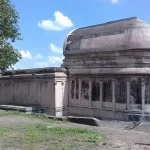
- Explore Sawantwadi: Maharashtra’s Hidden Gem of Heritage, Art, and Natural Splendour
